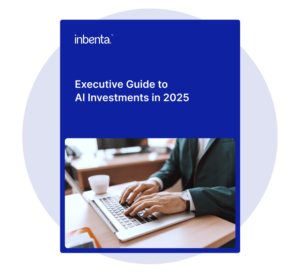Discover how AI is transforming e-commerce through enhanced search functionalities, machine-readable catalogs, and reimagined tech stacks, and learn incremental steps to integrate AI effectively while aligning with your brand’s vision for a better customer experience.
AI’s role in e-commerce is growing. Whether it’s predicting customer needs through patterns or fine-tuning search algorithms, the potential of AI is both promising and a bit daunting.
Deploying a combination of rule engines, analytics, and AI can predict customer needs with higher confidence. Accurately understanding customer desires enhances search-to-cart conversion rates, which directly improves revenue. But remember, deploying AI isn’t a guarantee of success; the tools you choose must align with your specific business goals.
Why machine-readable catalogs?
As customer behavior evolves, there’s a clear shift towards using technology not just to aid purchases but to automate them.
In its 2024 Hype Cycle™ for Digital Commerce, Gartner estimates that by 2028, there will be 15 billion connected machines with the potential to act as customers, outnumbering humans on the planet. These machines will act as smart assistants, guiding buying decisions based on user habits.
Preparing your retail catalog for machine interactions will help your business prepare for this change in buyer behavior. The aim is smoother interactions with these virtual helpers, ultimately leading to better customer experiences.
Reimagining your tech stack
To catch up with this trend, businesses should rethink their tech stacks, placing an emphasis on evolving their back-end operations.
Making your catalog indexable and searchable involves revisiting traditional models. Instead of relying solely on user interfaces, building out a setup where APIs and data exchanges facilitate seamless purchasing will allow your storefront to connect with millions of digital shopping assistants. Focus on shifting from a classic storefront to a more agile backend, able to serve dynamic machine requests.
Incremental steps toward integration
So how do you begin this transition?
Start small.
For instance, integrating AI-powered search automation can improve customer satisfaction by making search results relevant and efficient. Using rule engines and analytics further refines how well your system predicts and reacts to customer actions.
Once that’s been implemented, you can move to more complex systems like a dynamic catalog, which might include aspects like visual search capabilities. This feature is a hit in sectors relying heavily on visual appeal, such as fashion or home décor, because it personalizes the shopping experience by recognizing and suggesting visually similar products.
The right balance
As AI and machine-learning evolve, the potential application for business grows too. The integration of AI shouldn’t just be about following trends but making informed choices that align with your brand’s vision. It’s crucial that these systems innovate and enhance the customer journey in meaningful ways.
Are you ready for the next wave in digital commerce? With the right balance of AI, automation, and human oversight, your business can thrive well into the future.
In brief:
- AI enhances e-commerce by predicting customer needs and fine-tuning search algorithms, increasing search-to-cart conversion rates.
- Preparing machine-readable catalogs is essential as it facilitates smoother interactions with connected machines that are predicted to outnumber humans by 2028.
- Businesses need to evolve their tech stacks to support seamless purchasing through APIs and data exchanges, enabling better connectivity with digital shopping assistants.
- Starting with AI-powered search automation and progressing to dynamic catalogs with visual search capabilities can significantly improve the customer shopping experience.










